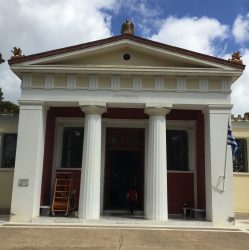For this Blog Post 4, I will be surveying the available technology and additional resources on my campus. I started by finding out where to access the tools I need to succeed, good old Google came in handy to unlock the secrets of St. Mary’s Media Center.
The Media Center at St. Mary’s College of Maryland provides St. Mary’s students, faculty and staff access to the facilities, hardware, software, equipment, and expertise necessary to realize their vision for media intensive projects. The Media Center staff are available to
- Teach students, faculty, and staff how to use media software and equipment to support their creative media projects.
- Provide multimedia classroom support to St. Mary’s faculty.
- Assist with media-related responsibilities at on-campus events.
The Media Center is located on the 3rd floor of the Library.
Noticing that the Media Center is on the 3rd floor of the Campus Library, I thought my best move would be to go check it out for myself. Last week I went into the Media Center to meet with Justin Foreman, I wasn’t sure what specifically I needed to know from him, so I asked Justin to show me around the inventory.
https://library.smcm.edu/wp-content/uploads/2014/12/317_2-300×200.jpg
The Media Center was very spacious, the walls were lined with Mac computers for students to edit their video and audio recordings. Within this work space Justin showed me how to work the computers to edit small video clips. I found it interesting how you could replace the audio file on the clip and insert another voice, or input music over the film overall. Justin said that there are plenty of Media Center employees, students and “adults,” that would be able to help me out if I had any questions about how to edit.
After being shown around the main area, he went through the list of equipment that would be excellent for interviewing people involved in my case. The things that stood out most to me was the: 1) Microphones (vocal, instrument, clip-on & shotgun) 2) Microphone stands (regular, boom, & tabletop). 3) Cameras (digital video & digital still) 4)Audio recorders (analog & digital) These video and audio devices will be the most important tools in conducting an interview with people of interest who are aware of the Song of Solomon case.
Justin also reviewed the recording platform called Audacity. Audacity is a free, easy-to-use and multilingual audio editor and recorder. Basic features, as listed on their website, including… Record live audio, record computer playback on any Windows Vista or later machine, convert tapes and records into digital recordings or CDs, Edit WAV, AIFF, FLAC, MP2, MP3 or Ogg Vorbis sound files. It would also allow me to cut, copy, splice or mix sounds together and change the speed or pitch of a recording.
With all of these new resources that are available to me, I know I will be able to create excellent audio and video recordings. I would like to thank St. Mary’s College Media Center, Justin Foreman, and Coplac digital learning for the opportunity.
https://library.smcm.edu/wp-content/uploads/2014/12/311_1-300×200.jpg

